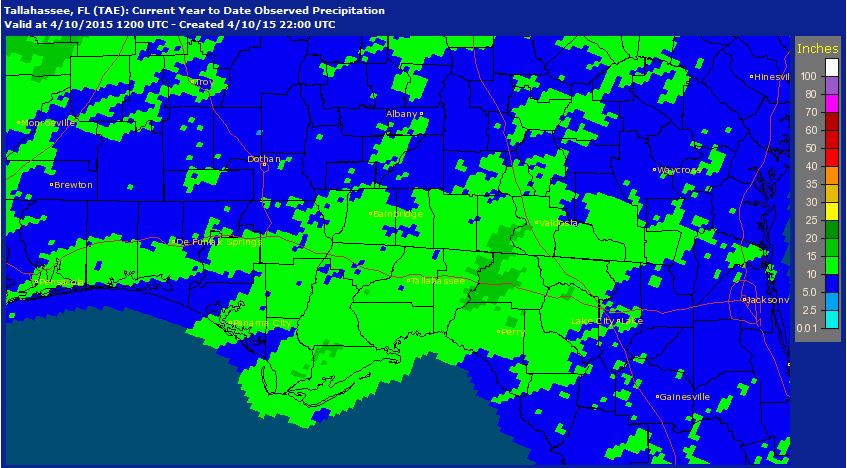
The promised weak El Niño did not deliver extra rainfall for the Panhandle the past three months . Much of the region experienced abnormally dry and moderate drought conditions through the first three months of 2015. The National Weather Service estimates for the first quarter show much of the agricultural region of the Western Panhandle received less than 10″ of rainfall, and the eastern counties less than 15″.
 The six Florida Automated Weather Network (FAWN) stations also showed the variation of rainfall for the the first three months of 2015. The average for all six stations was only 10.7″ from January through the end of March. Monticello was the wettest location with 14.2 inches, while the DeFuniak station only recorded 9.0″ over that same time period. Most locations have a historic averages around 15 inches for the first quarter of the year. Monticello and Carrabelle were only an inch below average for the first quarter, but Jay was 8 inches below normal, DeFuniak 7″, and Marianna 6″ below historic averages. The University of Florida has historic rainfall records dating back to 1952 at the Marianna research station. The 9.4 inches recorded in January through March of 2015 is the lowest total in 26 years, when only 9.3″ fell in the first quarter of 1989.
The six Florida Automated Weather Network (FAWN) stations also showed the variation of rainfall for the the first three months of 2015. The average for all six stations was only 10.7″ from January through the end of March. Monticello was the wettest location with 14.2 inches, while the DeFuniak station only recorded 9.0″ over that same time period. Most locations have a historic averages around 15 inches for the first quarter of the year. Monticello and Carrabelle were only an inch below average for the first quarter, but Jay was 8 inches below normal, DeFuniak 7″, and Marianna 6″ below historic averages. The University of Florida has historic rainfall records dating back to 1952 at the Marianna research station. The 9.4 inches recorded in January through March of 2015 is the lowest total in 26 years, when only 9.3″ fell in the first quarter of 1989.
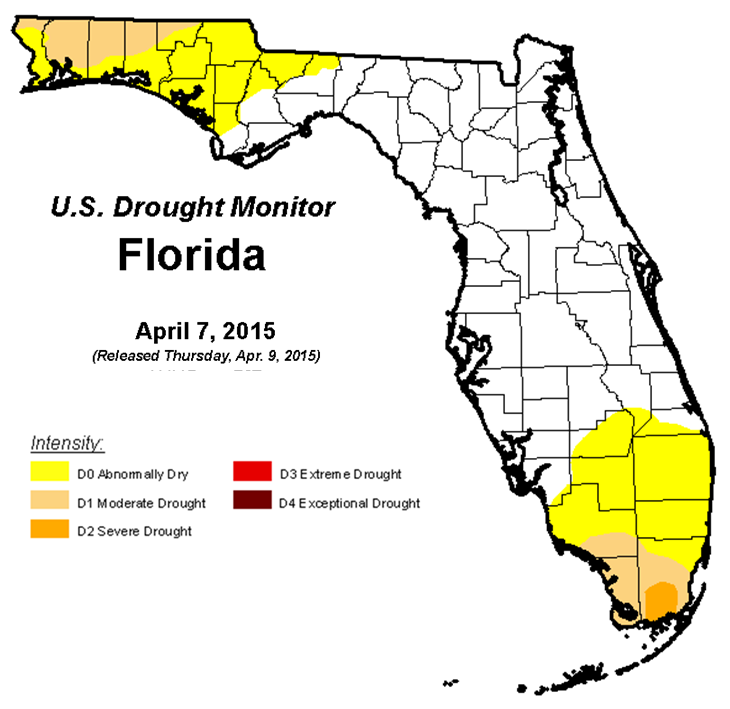 The Florida Drought Monitor shows how dry the Panhandle has become. This is not good news right at planting time for most of the major crops.
The Florida Drought Monitor shows how dry the Panhandle has become. This is not good news right at planting time for most of the major crops.
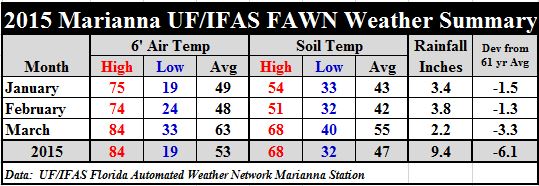 The good news is that Temperatures have certainly risen in the last month. Average air temperatures rose 15 degrees , and average soil temperatures 13 degrees in March as compared to February.
The good news is that Temperatures have certainly risen in the last month. Average air temperatures rose 15 degrees , and average soil temperatures 13 degrees in March as compared to February.
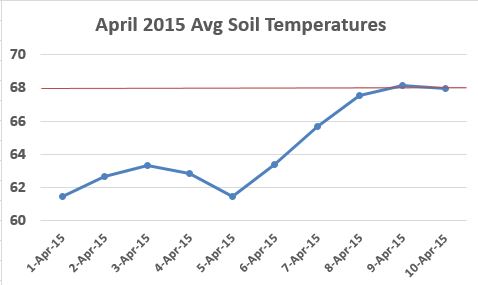 Average soil temperatures have risen even more over the first 10 days of April, to the 68º minimum required for excellent peanut germination. With a front moving in, growers should keep a close eye on this before planting to ensure soils remain warm enough for rapid plant growth.
Average soil temperatures have risen even more over the first 10 days of April, to the 68º minimum required for excellent peanut germination. With a front moving in, growers should keep a close eye on this before planting to ensure soils remain warm enough for rapid plant growth.
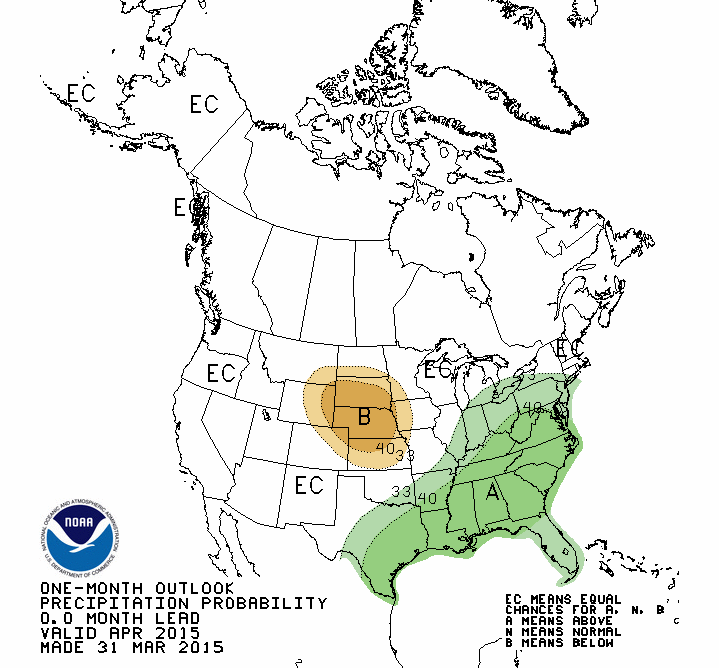 NOAA’s Climate Prediction Center’s outlook for April is encouraging with expectations for above average rainfall across the Southeast. However, they also expected above average rainfall for March, which did not occur in the Panhandle. Hopefully the needed rain will come in time for planting, now that the soil the soil is nearing the ideal temperatures for peanuts and cotton.
NOAA’s Climate Prediction Center’s outlook for April is encouraging with expectations for above average rainfall across the Southeast. However, they also expected above average rainfall for March, which did not occur in the Panhandle. Hopefully the needed rain will come in time for planting, now that the soil the soil is nearing the ideal temperatures for peanuts and cotton.
 0
0
